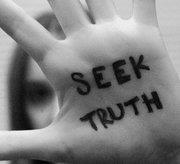1 februari 2013
Inside LSD - Full Length Documentary US
INSIDE LSD puts this mysterious molecule back under the microscope. From psychedelics given to terminally ill patients, to reputedly the "world's purest LSD" administered in lab experiments, find out why some researchers believe this "trippy" drug could become the pharmaceutical of the future, enhancing brain power, expanding creativity and even curing mental illness.
Fifty years ago, psychedelics or "mind-manifesting" drugs like LSD were considered cutting-edge science. Within months of its accidental discovery in 1943 by Hoffman, free samples of LSD were arriving at the doorsteps of scientists and psychiatrists around the world to test its effects on everything from alcoholism to autism. Even the Central Intelligence Agency and the military dosed their own operatives to see if LSD could be weaponized for mind control. But this powerful hallucinogen became a street drug with a dangerous reputation, and it was eventually outlawed. Yet despite its illegality, an estimated 23 million Americans have taken LSD, and more than 600,000 try it each year.
Now, after more than three decades, cutting-edge science takes on psychedelics again. At Purdue University, pharmacology professor Dave Nichols is one of a select group with permission to manufacture and experiment with LSD. His team uses some of the purest LSD ever made to study its molecular structure and effect on the brains of rats, with intriguing results. EXPLORER: INSIDE LSD shows how after chronic dosing, Nichols' rats begin to avoid social contact and mimic schizophrenic behavior in humans. Nichols believes his study may shed light on the chemical mechanisms underlying mental illnesses, potentially leading to cures.
Lysergic acid diethylamide, abbreviated LSD or LSD-25, also known as lysergide and colloquially as acid, is a semisynthetic psychedelic drug of the ergoline family, well known for its psychological effects which can include altered thinking processes, closed and open eye visuals, synaesthesia, an altered sense of time and spiritual experiences, as well as for its key role in 1960s counterculture. It is used mainly as an entheogen, recreational drug, and as an agent in psychedelic therapy. LSD is non-addictive, is not known to cause brain damage, and has extremely low toxicity relative to dose, although in rare cases adverse psychiatric reactions such as anxiety or delusions are possible.[3]
LSD was first synthesized by Albert Hofmann in 1938 from ergotamine, a chemical derived by Arthur Stoll from ergot, a grain fungus that typically grows on rye. The short form "LSD" comes from its early code name LSD-25, which is an abbreviation for the German "Lysergsäure-diethylamid" followed by a sequential number.[4][5] LSD is sensitive to oxygen, ultraviolet light, and chlorine, especially in solution, though its potency may last for years if it is stored away from light and moisture at low temperature. In pure form it is a colorless, odorless, and mildly bitter solid.[6] LSD is typically delivered orally, usually on a substrate such as absorbent blotter paper, a sugar cube, or gelatin. In its liquid form, it can also be administered by intramuscular or intravenous injection. LSD is very potent, with 20--30 µg (micrograms) being the threshold dose.[7]
Introduced by Sandoz Laboratories, with trade-name Delysid, as a drug with various psychiatric uses in 1947, LSD quickly became a therapeutic agent that appeared to show great promise.[8] In the 1950s the CIA thought it might be applicable to mind control and chemical warfare; the agency's MKULTRA research program propagated the drug among young servicemen and students. The subsequent recreational use of the drug by youth culture in the Western world during the 1960s led to a political firestorm that resulted in its prohibition.[9] Currently, a number of organizations—including the Beckley Foundation, MAPS, Heffter Research Institute and the Albert Hofmann Foundation—exist to fund, encourage and coordinate research into the medicinal and spiritual uses of LSD and related psychedelics.
